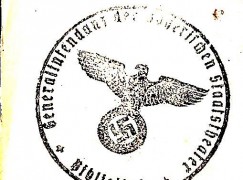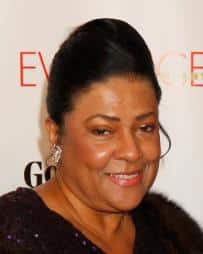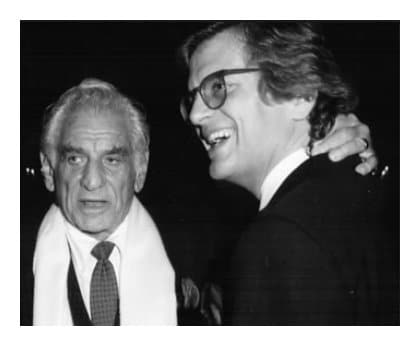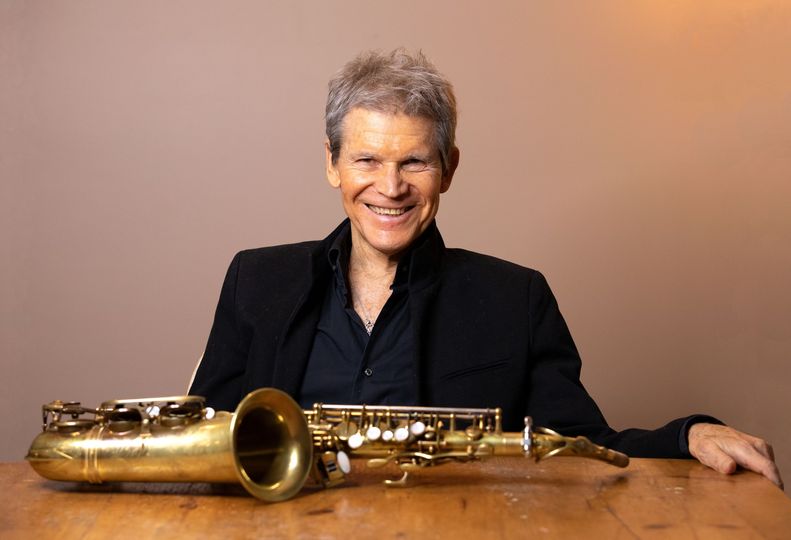A musical protest written in a Nazi camp
OrchestrasAbe Gurko writes:
Won’t Be Silent- A Song of Hope is a documentary in development about the music of resistance inspired by a recently discovered, long-lost piece of music that my uncle Wolf Durmashkin—a renowned composer/conductor—wrote while in captivity in a concentration camp in 1943. He was killed hours before the liberation. Won’t Be Silent traces the journey this healing piece of music and explores the power of music and its ability to motivate and uplift people to take action and speak up against social injustice.






https://www.inquirer.com/arts/terezin-holocaust-concentration-camp-music-book-michael-ludwig-20220319.html?mc_cid=c7879e4b4f&mc_eid=0fdfb3ae7e#new_tab
Thanks for bringing this to my attention. Very moving. I like the Klezmer moment echoing The Ode to Joy around 5′.
Moving. Thank you.
Against oblivion
In chamber concerts, the Deutsche Oper Berlin commemorates the eight musicians of the opera orchestra who were persecuted during National Socialism.
Orchestra rehearsal under chief conductor Ignatz Waghalter in October 1912. The German Opera House was inaugurated on November 7, 1912 with a performance of ›Fidelio‹ conducted by Waghalter. The photo also shows Ignatz Waghalter’s brother, the violinist Wladyslaw Waghalter (as concertmaster at the first desk of the first violins). He was one of eight orchestra musicians who were fired after the Nazis seized power. He died in Berlin in 1940. His wife and one daughter were deported and murdered in Auschwitz • Photo © Archive Deutsche Oper Berlin
In the concert series ›Against forgetting‹, members of the orchestra of the Deutsche Oper Berlin commemorate Jewish orchestra musicians who were banned from their professions under National Socialism, had to emigrate or were killed in the extermination camps. The evening tells their lives and stories using pieces of music and personal documents, read by the actress Margarita Broich. The second concert in the series on March 21 focuses on the life and musical work of Alphons Hirsch, Max Nelken, Kurt Oppenheimer and Ernst Silberstein. We met the initiator of the series, Benedikt Leithner, solo drummer in the orchestra of the Deutsche Oper, in the canteen of the opera house.
Benedict Leitner
VAN: How did you come up with the project?
Benedikt Leithner : It all started with a plaque that hung in our tuning room, on which all the members of the orchestra are listed with the date they joined and the year they left. There were many names who ‘left’ the orchestra in 1933 or shortly thereafter, although they had only recently joined. I went through all the names and then started looking for sources in different places, in the state archive in Berlin, in the federal archive, in the archive of the Academy of Arts and the University of the Arts (UdK), and of course also on the internet. That went on for several months. I then found eight Jewish orchestra musicians who were banned from working in 1933 and tried to find out their history.
Many files were burned or destroyed during the war. Did you still find something about all of them?
Yes, a lot to some, not so much to others, but I was surprised that I found something about each one. And although I’m not a professional, these archives are a world of their own. I’m sure there are many more.
Did you know that this would result in a concert series?
No, in the beginning it was just personal interest. I thought of maybe giving the results to a historian to work through the story. But the things that I found in the personnel files, for example, tell such a strong story that it was obvious to make our own format out of it. For example, there is the letter from Werner Lywen, who was sitting at the last viola stand and in the letter expressed his wish to switch to the first violins. Then I found out later that after he emigrated he became concertmaster under Leonard Bernstein in the USA.
Was there a fear of contact with these sources because you are not a historian?
Of course that concerned me. I’ve always been very interested in history and I can sort it out, but I’m a professional musician, not a historian. For me, the concert is not about a complete historical classification. We read from original documents, this is a puzzle piece of a picture that everyone has to complete themselves. They were musicians, colleagues of mine, I wanted to erect a musical monument to them.
How was the reaction in the house?
There was a bit of skepticism at first about devoting myself to it, or whether it’s a good thing that I ‘m doing it, a non-professional. But then I said I’ll just do it. Everyone found the first concert so important and moving that the doubts were dissolved.
The German Opera House, as the German Opera was called during the Nazi era, was directly subordinate to Goebbels’ Ministry of Propaganda and, like the Bayreuth Festival, functioned as one of the regime’s representative stages. How did that happen?
The State Opera Unter den Linden was owned by the State of Prussia and thus by the Prussian Prime Minister Hermann Göring. But Goebbels also wanted an opera house, so this opera house, like the Philharmonic, came to the Reich. The Nazis hated this house during the Weimar Republic, unlike the State Opera, not to mention the Philharmoniker under Furtwangler. The artistic director Carl Ebert was defamed as a “music Bolshevik”, his manager was the very young Rudolf Bing, who later became director of the Metropolitan Opera in New York, who was of Jewish origin and was close to the SPD, and the two conductors were also Jews. They were all released in March 1933 shortly after the seizure of power. The house stood completely decapitated, giving the Nazis an opportunity to use people they favored.
Shortly after the seizure of power, in April 1933, the so-called ›Law for the Restoration of the Professional Civil Service‹ was passed, which allowed the Nazis to remove Jewish civil servants from the service. Was that also the formal framework for the dismissal of the musicians?
Yes, some then tried to sue again for the front-line combatant privilege because their fathers had died in World War I or they had been civil servants before 1914. Of the four musicians we are now commemorating in the concert, the cellist Ernst Silberstein is the only one who could really be dismissed immediately because he was still very young, born in 1900. But these exceptional regulations only lasted for a short time.
Were there musicians from the orchestra who tried to put in a word for their colleagues, as Furtwangler has said?
Rather the opposite. These are very small pieces of the puzzle. There is a letter from director Wilhelm Rode to the Ministry of Propaganda in which he writes that it has unfortunately not yet been possible to “remove a Jewish musician from the orchestra association”. If nothing were to happen there, the opera house would have to take him on as well, which would certainly ‘not go over well’ with the orchestra. In the case of Furtwängler, I believe from my layman’s point of view that he wanted to keep the Jewish musicians because they occupied prominent positions in the orchestra and were so important musically. If you go in there like that, you realize again and again that actually hardly anyone who stayed in Germany could stay clean.
Two exceptions, who went into ›inner emigration‹ during the Nazi era, appear in the concert: Karl Klingler and Karl Amadeus Hartmann.
Yes, Klingler was the founder of the famous Klingler Quartet, in which the principal cellist of the Deutsche Oper, Ernst Silberstein, played. Klingler was incredibly committed to Silberstein and then dissolved the quartet when Silberstein had to emigrate. And he resisted when in 1936 the bust of his teacher Joseph Joachim was removed in front of today’s UdK and he then lost his professorship there because of his protest. Karl Amadeus Hartmann also spoke out very firmly against the Nazis and boycotted the regime by not allowing any of his works to be performed in Germany.
Ernst Silberstein, born on October 15, 1900, became solo cellist of the orchestra in 1925. In addition to his work as an orchestra musician, from 1929 he was the cellist in Karl Klingler’s famous string quartet (photo). After his dismissal from the opera in 1933, thanks to the support of Karl Klingler, Ernst Silberstein was able to perform in chamber concerts with the quartet until early 1936. When he was also forbidden to do so, Silberstein emigrated to New York in April 1936. From 1937 he worked in the radio orchestra under the direction of Arturo Toscanini and at the Metropolitan Opera before George Szell brought him to the Cleveland Orchestra as principal cellist in 1947. He remained there until his retirement in 1967 and also taught very successfully at the Cleveland Institute of Music until 1975.
There is this story that Ernst Silberstein played with the Klingler Quartet in front of Hindenburg in March 1934, at a celebration at which Hitler was also present. Is that occupied?
Yes, that’s what it says in the letter that Klingler wrote to Hitler in November 1934 to save Silberstein for his quartet. The letter is also read out at the concert.
Was there an answer?
Yes, the head of the Reich Chancellery replies to this at the beginning of December [ reads out ]: ‘I hereby humbly confirm receipt of the obliging letter of November 22, the contents of which the Führer and Reich Chancellor have taken note of. As commissioned, I have the honor to report that the Fuehrer and Reich Chancellor does not see himself in a position to exert influence in the sense you have requested.
Three of the four musicians to whom next week’s concert is dedicated emigrated, the violinist Max Nelken was deported with his wife from Berlin to Minsk in 1941 and murdered there. what do you know about him
I found relatively little about him. The violinist Max Rosenthal, who appeared in the first concert, had a very similar story, they were both second violins who had been members of the orchestra since the opera house was founded. Both were deported to Minsk on the same deportation train. It is known that there were around 1,000 people on this train, four of whom survived. Coincidentally, there is a historical work about this train that lists all the names, that’s where I found the two. There is also an account of conditions on the train from one who survived.
Did you try to find descendants of the musicians?
Yes, at the first concert I found descendants of two musicians, one even had a daughter, at this concert I didn’t find any, most of them have indications that they had no children.
Max Nelken, born on February 8th, 1881, had held a position as second violinist since the opera house was founded in 1912. He also worked as a violin teacher at the Sternchen Conservatory. He was deported to Minsk with his wife Edith Nelken on November 14, 1941. There he was probably either murdered in mass killings in July 1942 or died earlier from the poor living conditions.
From the Vienna Philharmonic it is documented that almost 50 percent of the orchestra were NSDAP party members, and also two in the SS. Are there any figures for the Deutsche Oper?
It’s often said that it was as good as 40 percent, but that’s a number that’s often rumored, but I don’t know how well documented it is. It was like everywhere, there were many followers, there were many who were positive about the Nazis and very few who really protested.
Between being banned from working at the opera and emigration or deportation, the four musicians stayed in Berlin for a few more years. How did they survive?
Quite different, Kurt Oppenheimer worked as a teacher in the Jewish private music school in Holland, and some were involved in the Jewish Cultural Association. What’s striking is that young musicians found it easier to emigrate because they didn’t have that much to lose and experienced and realized the worsening conditions differently. At the same time, orchestra musicians had an advantage because they could practice their profession internationally. Ernst Silberstein already had contacts in the USA and the prospect that he would find a job in New York. It was often by coincidence. Alphons Hirsch’s wife was a Swiss citizen, which helped him get out and then find a job with the Orchester de la Suisse Romande. At the same time, it was also a question of costs. If you wanted to emigrate to the USA, you needed an affidavit, you had to have an account there with a lot of money in it, basically someone who would vouch for you. Of course, that was easier for the big, well-known names than for a ‘simple’ orchestra musician.
How did you choose the music for the concerts?
The pieces should have as concrete a relationship as possible with the musicians. Sometimes it was easy, for example I found Kurt Oppenheimer’s program for a concert in the archive of the UdK, where he played Paganini ‘s variations on a theme from Rossini’s opera ›Mosè in Egitto‹ . This is also on the agenda for next week. I also get the impression that Oppenheimer was a real ‘virtuoso’. On his emigration card, the professional title is not violinist, but ‘violin virtuoso’. The Klingler Quartet was particularly famous for its Beethoven interpretations, which is why they play Beethoven’s Great Fugue op. 133. But it’s not always so direct. I wanted to have a composer with me who also emigrated, hence theDance suite by Ernst Toch, who like Max Nelken was born in Vienna and worked in Berlin. And Hartmann’s string quartet is related to Alphons Hirsch because it was premiered in Geneva and Hartmann was in very close contact with the chief conductor of the Orchester de la Suisse Romande. At the same time, it’s a bit of a requiem for Max Nelken. Hartmann composed the string quartet in the same year as his orchestral work Miserae . He dedicated this back in 1933 ›To my friends, who had to die a hundredfold, who sleep for eternity, we will not forget you. Dachau 1933/34‹.
Kurt Oppenheimer, born on January 1st, 1890, had been a member of the first violins since 1912. During his studies at the Royal Academy of Music in Berlin, he was a prizewinner of the renowned Joseph Joachim Foundation. His release was also delayed due to the “Front Fighter Regulations”. From 1937 he worked as a violin teacher at the Jewish music school in Holland. In June 1941 he emigrated to Uruguay. There he became a member of the Montevideo Symphony Orchestra, with which he also performed as a soloist. After a serious illness he died in April 1945.
At the concert, only original documents will be read that have a direct connection to the musicians, letters, applications, evaluations by professors, music reviews from the time, an obituary. Why?
It’s about making the four of them visible, showing what happened to them, and at the same time erecting a musical monument to them.
Have you thought about how the commemoration could be continued beyond the concerts, similar to the stumbling blocks?
Yes, I have already applied for stumbling blocks for the murdered musicians and their family members, but the processing times are very long. I would also like to continue the series, a chamber music concert every year. Next season there is a concert dedicated to a dancer, a singer, a choir singer and a stage painter. Some of the dancers were communists and were wanted with an arrest warrant. In fact, it is also being considered that we will do a symphony concert in two seasons, in which we will introduce the persecuted conductors of the house. Kurt Sanderling was also a répétiteur here and then lost his position in 1933. On this occasion, my plan is to find a way somewhere on or in the house to commemorate the name permanently.
Has dealing with this story changed anything for you as a musician?
Yes, when I started here at the opera house in 2002, there was still very strong competition in Berlin with the State Opera, Thielemann against Barenboim, you read a lot about the ‘dark sound’, which orchestra follows the tradition even more and the ‘even darker has German sound. I’m now really skeptical about that, because you can find this idea so often with the Nazis.
This spooky debate came up again and again when Simon Rattle was chief conductor of the Philharmoniker.
Yes exactly, and actually it’s not a ‘German’ sound, that’s maybe a way you can play it, but you can explain it and teach it to everyone if you want.
In the world of classical music, too, there was actually no break after 1945 and denazification largely failed to materialize. How was it at the Deutsche Oper?
I think it was like everywhere here. The very worst Nazis were actually released, but some found good accommodation elsewhere. The competition between East and West continued immediately after the war, and the orchestras were immediately interesting again and they wanted to show that they were good. I recently read on the website of a large opera house that after 1945 the Nazis all had to leave. Then I thought: No, not with them, not with us, with no one. ¶
This song, this Man, has a lot in common with Bob Dylan! I believe in their ‘SOUL’S…
The Nazi symbol of an eagle holding a swastika in its talons brings back memories. During the 13 years that my wife was a member of the Munich Philharmonic (1980-1993), there was an almost identical symbol circumscribed by the words Orchester der Hauptstadt der Bewegung (Orchestra of the Capital City of the Movement) stamped on a lot of the older music including works by Strauss and Bruckner. The words had been blotted out with a somewhat transparent ink that had further faded which made it possible to still read them, and the swastikas weren’t touched at all. I asked the orchestra to remove them in 1991. My wife left the orchestra about a year later and I’m not sure they actually removed the swastikas. I wouldn’t be surprised if they are still on the music.
Genug mit dem gejammer – Verpiss dich !